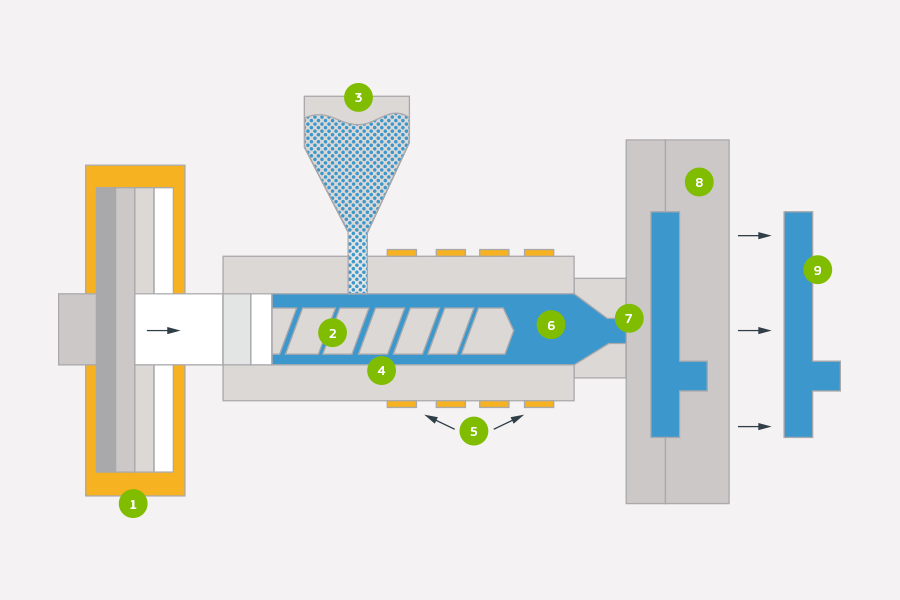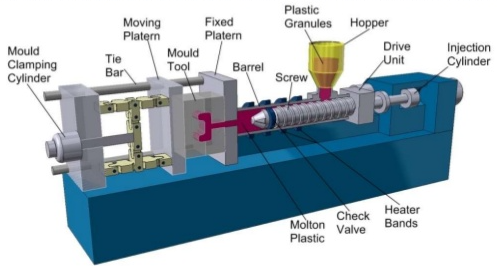Fascination About Manufacturings
Wiki Article
The Buzz on Die Casting
Table of ContentsSome Known Questions About Lean Production.The Best Strategy To Use For MfgMfg - TruthsAn Unbiased View of Plastic ManufacturingHow Manufacturing Industries can Save You Time, Stress, and Money.The Ultimate Guide To Lean Manufacturing
The message on this page is an example from our complete White Paper 'Shot Moulding for Customers' - * Example message * - for complete guide click the download button over! Introduction This guide is meant for people who are seeking to resource plastic mouldings. It provides a much needed insight into all that is involved with creating plastic parts, from the mould device called for to the moulding procedure itself.If you wish to discover additionally, the overview covers kinds of mould devices, in addition to special completing processes such as colours & plating. Words that are underlined can be found in the glossary in the appendix ... Part I: Moulding: The Fundamentals The Benefits of Shot Moulding Plastic injection moulding is a very precise procedure that supplies a number of advantages over various other plastic handling methods.
Accuracy is best for very intricate components. You can hold this moulding in the palm of your hand and also it has managers, ribs, metal inserts, side cores as well as openings, made with a sliding closed off feature in the mould device.
Some Known Factual Statements About Manufacturing


8 Easy Facts About Additive Manufacturing Described
from material feed & melting; material injection; shot time cooling down ejection and also the re-closing of the mould tool ready for prepared next cycle. Draft angles - The walls of a moulded part should be slightly tapered in the direction in which the component is ejected from the mould tool, to allow the component to be expelled quickly.Ejector stroke - The pushing out of ejector pins to eject the moulded component from the mould tool. Ejector stroke speed, size and also timing requires to be very carefully managed to avoid damage to the ejectors and also mould tool, yet at the same time make the moulding cycle as brief as feasible.

About Additive Manufacturing
Ribs - When a plastic component has slim wall surfaces, ribs are included in look at here now the style to make the slim wall surfaces stronger Side cores - Side action which creates a function on a moulded component, at an opposing angle to the regular opening instructions of the mould tool. mfg. The side core needs to be able to retract as the plastic component can not be ejected otherwise.
Walls - The sides of a moulded component The text on this page is an example from our complete White Paper 'Injection Moulding for Buyers'.
Production process for producing components by infusing molten material right into a mould, or mold Simplified layout of the process Shot moulding (united state spelling: shot molding) is a production process for producing parts by infusing molten material right into a mould, or mold. Injection moulding can be done with a host of materials primarily including steels (for which the process is called die-casting), glasses, elastomers, confections, and also a lot of typically thermoplastic as well as thermosetting polymers. Injection moulding is commonly used for making a range of parts, from the tiniest components to entire body panels of automobiles. Advancements in 3D printing technology, making use of photopolymers that do not melt throughout the injection moulding of some lower-temperature thermoplastics, can be utilized for some simple shot moulds. Injection moulding utilizes a special-purpose equipment that has three components: the injection system, the mould and the clamp.
What Does Lean Manufacturing Mean?
, with the quantity used of the previous being significantly higher.: 13 Thermoplastics are prevalent due to characteristics that make them very appropriate for injection moulding, such as simplicity of recycling, flexibility for a wide selection of applications,: 89 as well as capacity to soften as well as flow on home heating.In multiple dental caries moulds, each dental caries can be similar and create the same components or can be special and develop multiple various geometries during a single cycle. Moulds are usually made from tool steels, click this yet stainless-steels and aluminium moulds are ideal for specific applications. Aluminium moulds are generally improper for high quantity production or components with narrow dimensional tolerances, as they have substandard mechanical residential properties and are a lot more vulnerable to wear, damages, and also deformation during the shot and also securing cycles; however, aluminium moulds are economical in low-volume applications, as mould fabrication expenses as well as time are significantly lowered.
The screw provides the raw product forward, mixes as well as homogenises the thermal as well as thick circulations of the polymer, and also reduces the required heating time by mechanically shearing the material as well as including a substantial quantity of frictional home heating to the polymer. The product feeds forward through a check valve as well as gathers at the front of the screw into a quantity referred to as a shot. When sufficient product has actually collected, the product is forced at high stress and rate right into the component creating dental caries. The specific quantity of shrinking is a feature of the material being utilized, and also can be reasonably foreseeable. To avoid spikes in stress, the process usually utilizes a transfer setting representing a 9598% full cavity where the screw shifts from a consistent rate to a continuous stress control.
The Of Lean Production
The packing stress is used until the gate (tooth cavity entryway) solidifies. Due to its little dimension, the entrance is usually the initial area to solidify through its entire thickness.: 16 Once the gate solidifies, find out no more product can enter the cavity; appropriately, the screw reciprocates and obtains material for the next cycle while the material within the mould cools so that it can be ejected and also be dimensionally secure.Report this wiki page